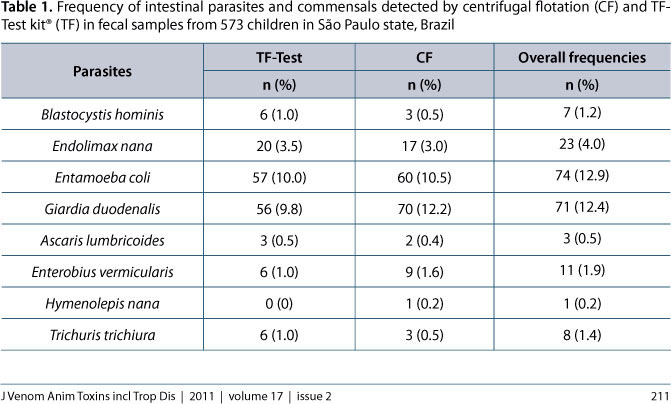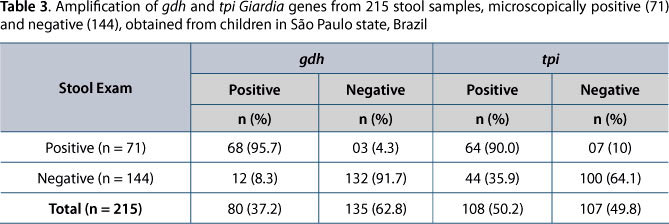The present study was designed to estimate the prevalence of Giardia infection in preschool- and school-aged children living in an endemic area. Fecal samples from 573 children were processed by zinc sulfate centrifugal flotation, centrifugal sedimentation (using a commercial device for fecal concentration - TF-Test kit®) and polymerase chain reaction (PCR)-based methods. Of the stool samples assessed, 277 (48.3%) were positive for intestinal parasites and/or commensal protozoa. Centrifugal flotation presented the highest diagnostic sensitivity for Giardia infections. The kappa index revealed that both coproparasitological techniques closely agreed on the Giardia diagnosis (86%) versus satisfactory (72%) and poor (35%) concordances for commensal protozoan and helminth infections, respectively. Concerning Giardia molecular diagnosis, from the 71 microscopy-positive samples, specific amplification of gdh and tpi fragments was noted in 68 (95.7%) and 64 (90%) samples, respectively. Amplification of gdh and tpi genes was observed, respectively, in 95.7% and 90% of microscopy-positive Giardia samples. For 144 microscopy-negative samples, gdh and tpi gene amplification products were obtained from 8.3% and 35.9% samples, respectively. The agreement between these genes was about 40%. The centrifuge-flotation based method was the most suitable means of Giardia diagnosis assessed in the present study by combining accuracy and low cost.
Giardia duodenalis; children; diagnosis; PCR






